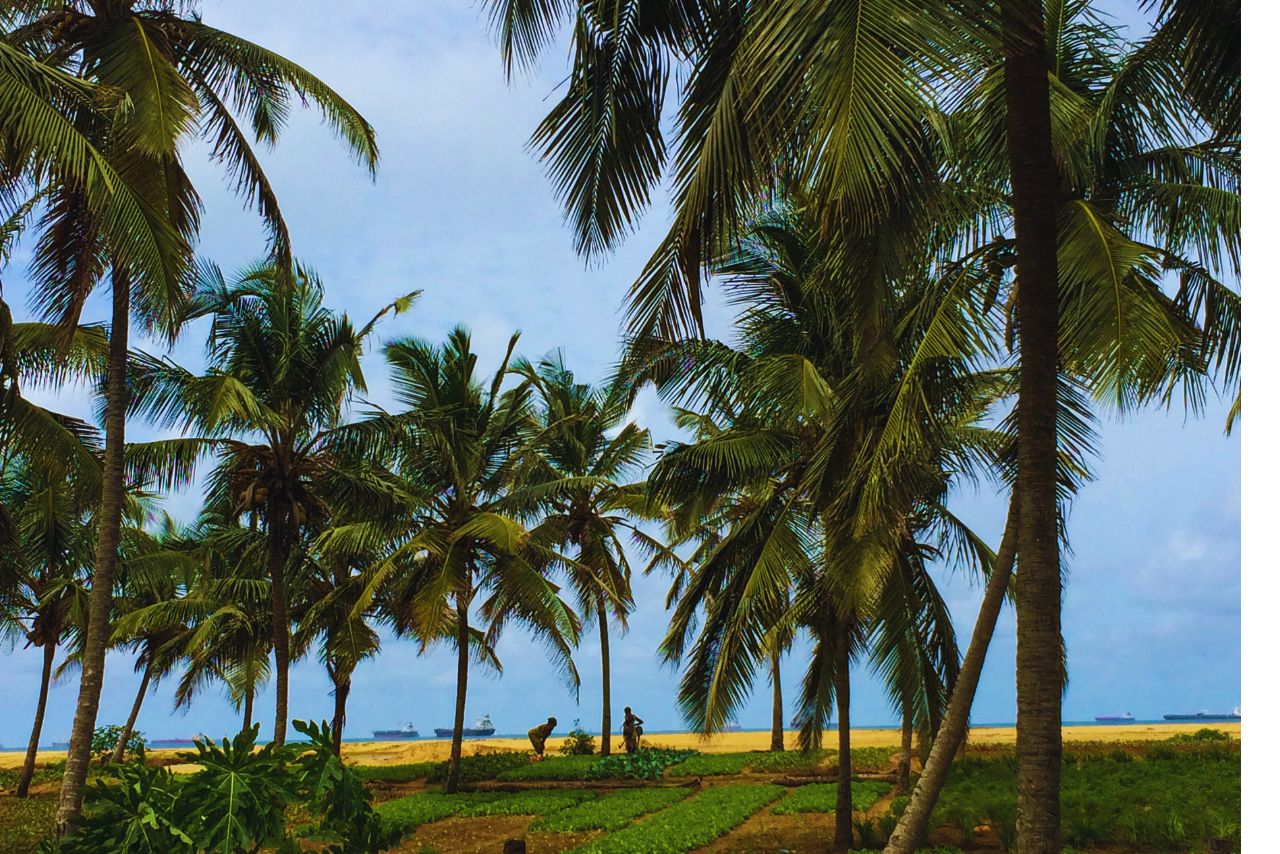Lomé sits where the Atlantic Ocean kisses Togo in the south.
There are long stretches of beach framed by palm trees, market stalls that are full of bright colors, and life in every corner.
This city pulses with life, contrast, and surprises. A trip here feeds your senses and grounds you in something real and vibrant.
You travel not just to see but to feel: the salt-air breeze off Lomé Beach, the sharp spice smells in the Grand Marché, and the rhythm of drums in a late-night gathering.
This place shifts something in you. It offers affordable adventure, culture that isn’t polished for tourists, and memories that stick.
Here are some of the best things to do in Lome.
Beaches in Lomé
You can’t visit a city by the ocean and not feel its pull.
Lomé’s coastline stretches for miles, a mix of calm corners, lively beach bars, and hidden stretches where the Atlantic breeze takes over.
Below are some of the best beaches in Lomé to unwind, eat fresh seafood, and soak in the rhythm of coastal Togo.
Lomé Beach
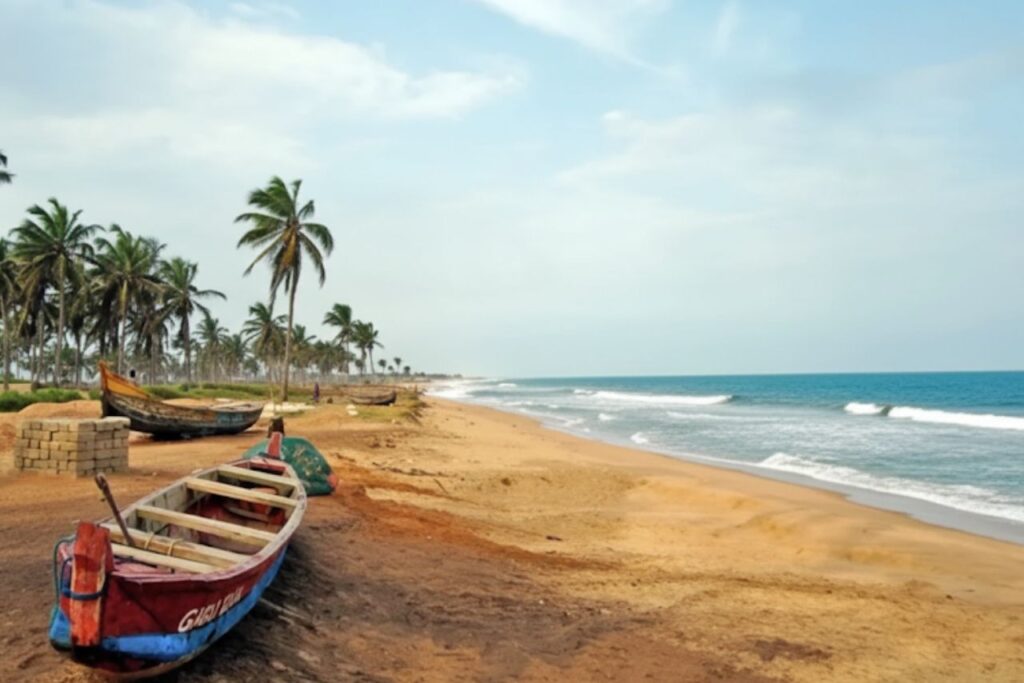
Photo source: sandee
Right in the heart of the city, Lomé Beach is where the capital meets the sea.
Locals come here to relax, play football, or grab roasted corn and coconut water from street vendors.
The ocean can be strong, so it’s best to admire the waves more than you swim in them. Stick to areas near cafés or hotels for safety and comfort.
As the sun sets, the skyline glows gold, and music often spills from nearby bars, it’s a simple, local joy you shouldn’t miss.
Coco Beach
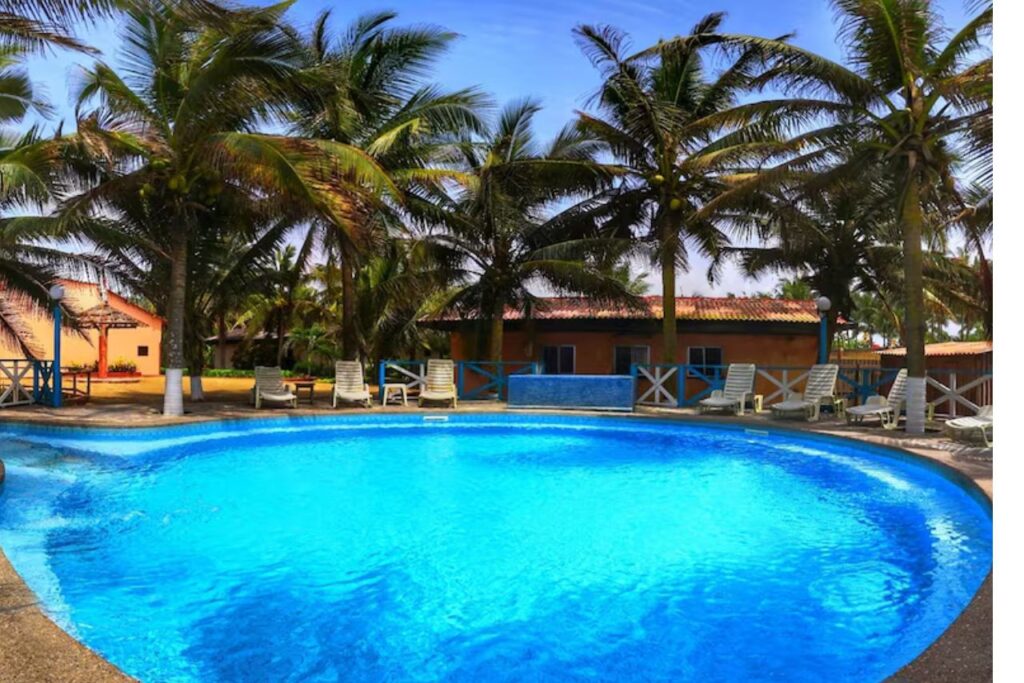
Photo source: expedia
If you prefer a beach with easy access and amenities, Hotel Coco Beach is a favorite.
It’s a lively hangout with a private stretch of sand, loungers, and a restaurant that serves everything from grilled lobster to ice-cold beer.
You can come for the day or stay overnight to wake up to the sound of waves. It’s safe, clean, and one of the top-rated beaches in Lomé for both locals and travelers.
New Robinson Plage

Photo source: ghrshotels
Just outside the city, New Robinson Plage offers a more relaxed escape.
This beach is attached to a small hotel and restaurant, making it a perfect spot to spend the day or even a weekend.
The sand is soft, the food is fresh, and you can easily reach it by shared taxi, they zip up and down the coastline all day. Order a fruit juice, open your favorite book, and let time drift by.
Royal Beach Lomé
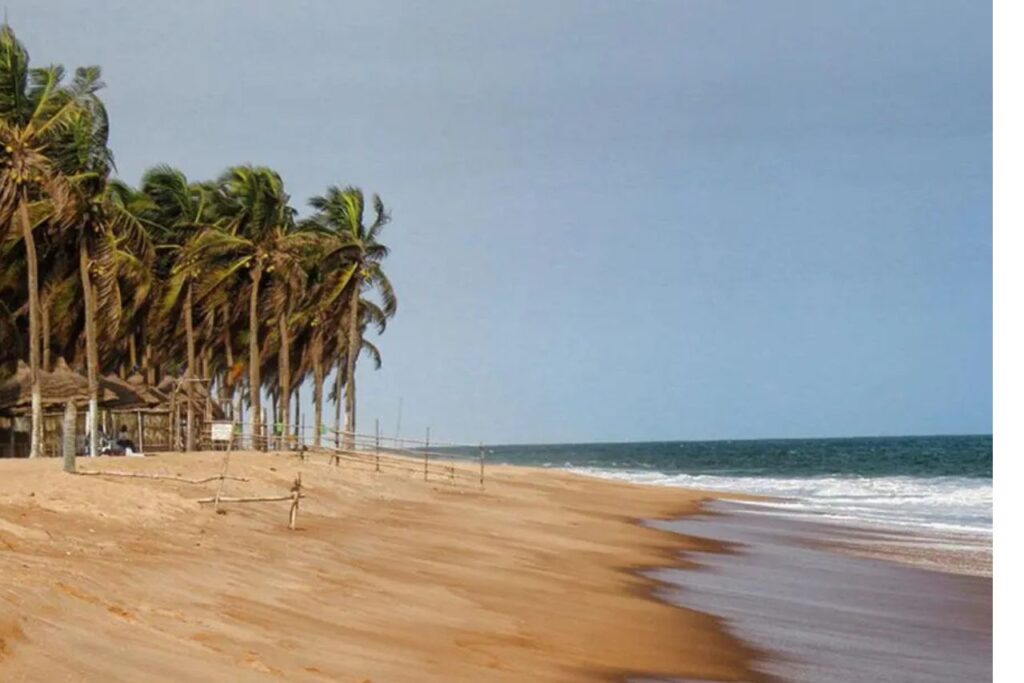
Photo source: sandee
Togo has no shortage of ocean views, but Royal Beach Lomé delivers peace in every grain of sand.
A little removed from the city’s chaos, this stretch of coast feels private and pure. There aren’t many amenities, just the sea, the sky, and quiet. That’s the charm.
Bring what you need, then slow down and let the Atlantic breeze do the rest.
When hunger calls, the beachfront restaurant serves grilled fish and local dishes that taste even better with the view.
Baguida Beach
A local favorite, Baguida Beach sits east of Lomé and mixes energy with ease.
Weekends bring crowds, music, and families picnicking under palm trees. During the week, it’s quieter, with fishermen mending nets and kids playing football by the tide.
You’ll find small shacks serving fried plantains and freshly caught fish, authentic and flavorful.
It’s also one of the safest public beaches in the area when you stick near restaurants and busy spots.
Safety, Tips & What to Know
- Always pick a beach that’s affiliated with a hotel or restaurant. Those locations get monitored more, have staff and often have infrastructure to make your visit safer. You avoid many risks that coastal areas without oversight tend to have.
- The Atlantic currents here can get strong. Even at “nice beaches,” check the tide, ask locals about safe spots, and don’t go too far without observing waves first.
- Shared taxis, zémidjans or mototaxis can get you to these beaches quite cheaply. Negotiate in advance, or confirm the approximate fare so you are not surprised.
- If you want to stay, pick beach hotels or guesthouses so you can easily walk out to the sand for sunrise or sunset. If you only visit for half a day, go late afternoon: heat is lower, light is softer, and it is often safer.
READ ALSO: 100 Best African Safaris to Experience Once in Your Lifetime
Markets
Grand Marché & Adawlato (Great Market)
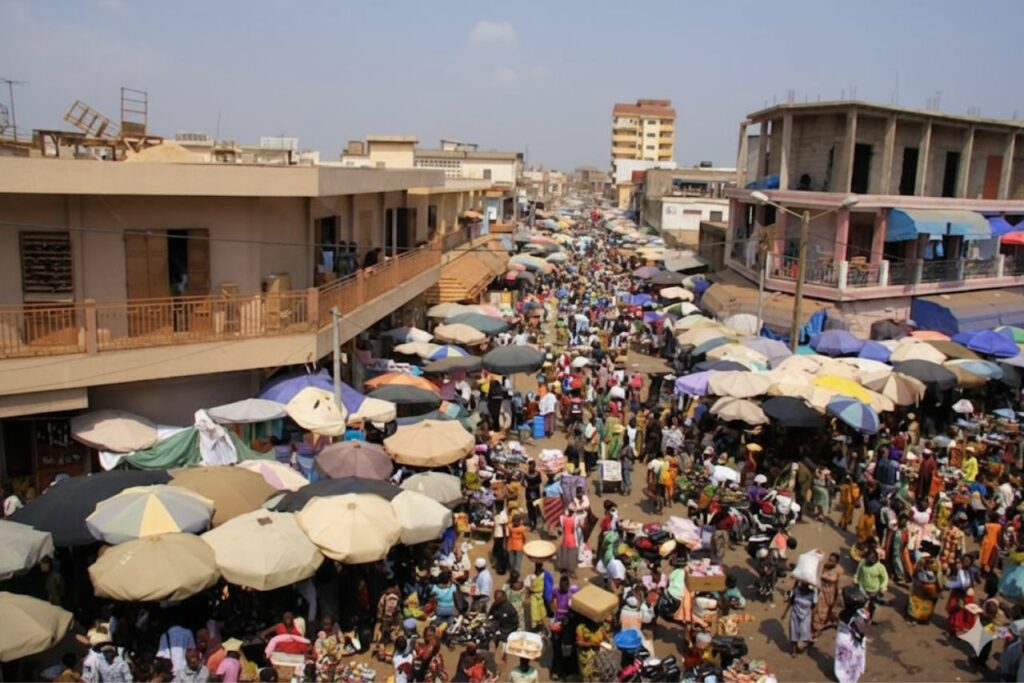
Photo source: historypin
This is the heart of shopping in Lomé.
Stalls are packed tightly, fabrics in bold patterns, masks, beads, and spices are all sold here. Women sell patterns of kente cloth, carved wood, and jewelry. You will haggle. It feels intense, colorful, and alive.
Go in the morning when it is cooler and vendors still have full stock. You will find something beautiful to take home.
Adawlato is becoming more polished but stays real.
Craftspeople sell batiks, carved masks, and leather goods. Prices here are higher compared to Grand Marché, but craftsmanship often justifies it.
Ask about the stories behind pieces. It makes the purchase more than just a souvenir, it becomes a connection.
Marché des Féticheurs (Voodoo Market) & Flea Finds
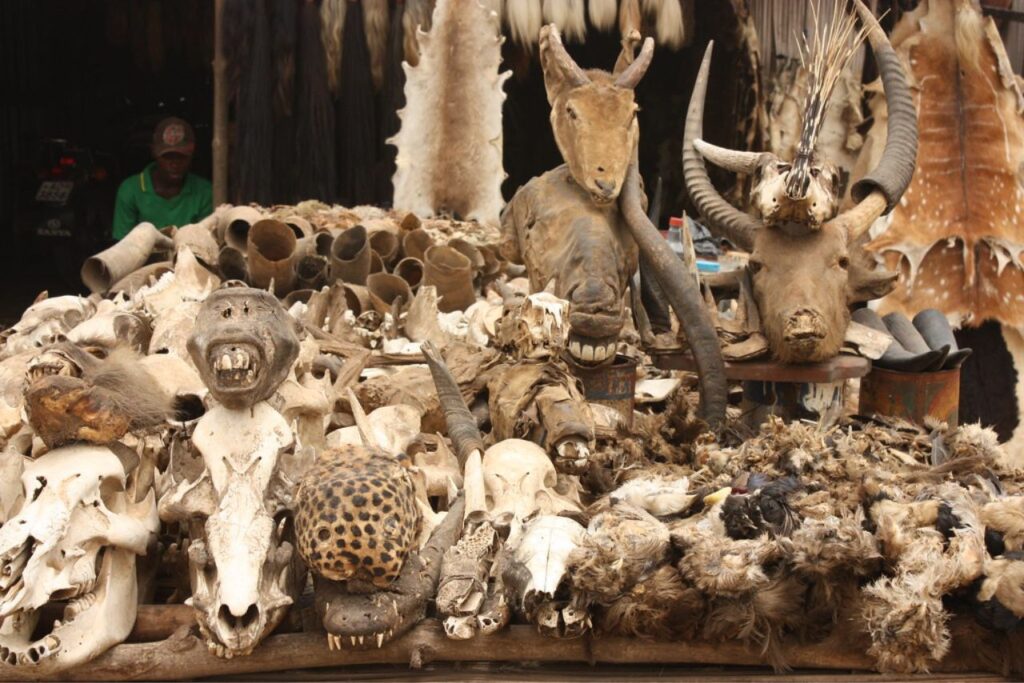
Photo source: flickr
The Akodessawa Fetish Market (also called the Voodoo Market) shows a deeper side of Lomé.
Herbs, dried animals, ritualistic objects, spiritual specialists. This is not a sideshow. It is a living tradition.
Respect matters. Ask before photographing and let someone explain what you see.
The price of a guided tour is around 10-15 USD and adds context that turns a strange market into meaningful learning.
If you like surprises, stroll through the flea markets and buy vintage items, second-hand goods, weird little antiques that tell stories, postcards, old bottles, or maybe an old camera.
You never know what gem you’ll discover. Just bring small bills and patience.
YOU SHOULD SEE THIS: Top Hidden Gems in West Africa You Need to Visit
Culture, Food & Rituals
Lomé moves on sound, rhythm, and spirit.
Walk through its streets and you’ll hear layers of life, drums echoing from courtyards, and the call of church choirs blending with the pulse of Afrobeat from beach bars.
The city’s rhythm is alive and rooted in tradition.
Ewe drumming and dance are central here, passed down from generation to generation.
You can attend a performance at a cultural center or during a local festival to feel that heartbeat.
Performances usually cost between 10 and 25 USD, and the colours, costumes, and storytelling stay with you long after you leave.
The Food

Photo source: store2641
Lomé’s street-food scene rewards the open-hearted traveler.
Try riz au gras (spiced rice with vegetables and meat), grilled fish with pepper sauce, fufu with groundnut soup, or crispy fried plantains.
Meals like these cost about 1,500–3,500 CFA ($3–6 USD).
Mid-range restaurants serve similar local flavours with a modern twist for around 7,500–10,000 CFA ($13–$18 USD).
For the best experience, skip the fancy dining rooms and eat where locals eat: market stalls, roadside spots, or open-air bars.
You’ll find authenticity and flavour in every bite.
Language and Greetings
In Lomé, language is part of identity.
Locals mainly speak Ewe and French, and greetings hold real value.
A simple “Woezon” (welcome) or “Bonjour” can open hearts and doors.
Showing respect through greetings is an instant connection to Togo’s warm traditional manners.
Festivals & Local Celebrations

Photo source: republiquetogolaise
Lomé’s spirit comes alive during festivals.
The Epe Ekpe (Guin Festival) is one of the most important, celebrating ancestral spirits with drumming, dance, and vibrant costumes.
Smaller neighbourhood festivals often happen throughout the year, visitors are usually welcome to watch or join in.
These moments reveal the depth of Togolese pride and community.
Also…
Culture in Lomé isn’t limited to performance halls or museums, though both have their place.
Visit the Musée National du Togo to explore masks, royal regalia, and ancient crafts, then walk to Place de l’Indépendance, where history and pride stand tall.
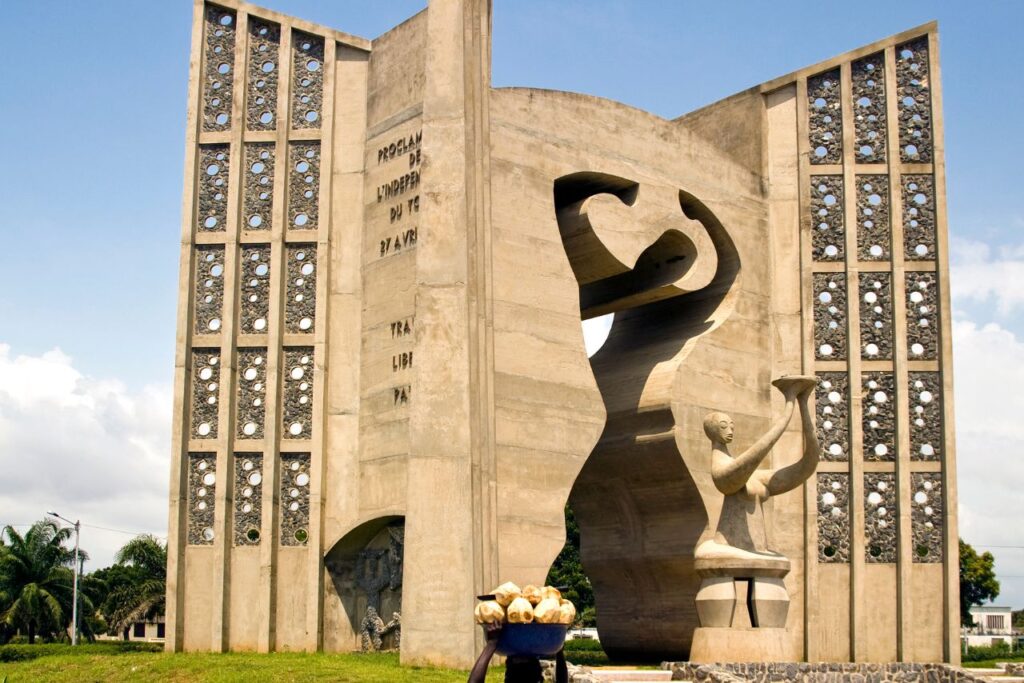
THIS WOULD INTEREST YOU: Cultural Festivals in West Africa
Getting Around & Budgeting
Transportation
Transportation in Lomé stays cheap if you go local.
Zémidjans (motorcycle taxis) cost 500-1,500 CFA ($1-$2.70) for short trips.
Private taxis cost more: 1,500-3,000 CFA ($2.70-$5.40), depending on distance.
Shared city taxis are also a good bet.
Accommodation
Accommodation covers the spectrum: guesthouses, small hotels, and budget rooms.
You can find rooms for $20-$40 USD per night off-peak. Mid-range hotels cost more depending on location, amenities, and whether you’re near the coast.
Expect higher prices in tourist-friendly zones.
Visa
Most visitors require a visa in advance.
The newer e-Visa system (since about 2023) has simplified things.
ECOWAS nationals don’t need visa. Always check your country’s status.
Best months
November through March bring cooler, drier weather. Rainy season can make travel harder and dampen beach joys.
Events & Special Experiences
If your timing aligns, catch Fête de la Musique in June.
The whole city turns into stages.
Street concerts, drums, small rooftop performances, beach sets, It feels communal. You stumble into music and join the chorus.
Also Biennale des Arts en Espace Public du Togo happens in Lomé.
Theatre in public spaces, street dance, visual art installations. Useful for seeing how artists work with city life itself. Public spaces become the canvas.
Final Thoughts
Lomé waits with open arms. It does not pretend to be perfect.
It may surprise you with heat, with dust, with traffic, but all those things belong.
The sweat becomes part of the story. The colours, sounds, tastes, they linger long after you leave.
Book that ticket. Stay in a small guesthouse. Eat from street vendors. Walk barefoot on the sand at sunset. Talk with local artisans. Let Lomé’s markets wake something in you. Your next big story could begin here.

